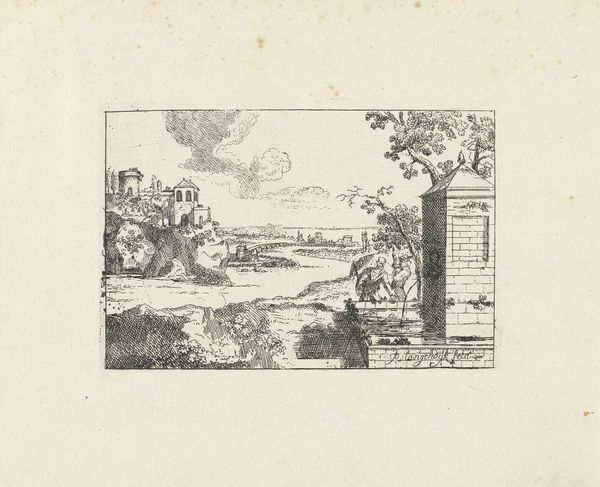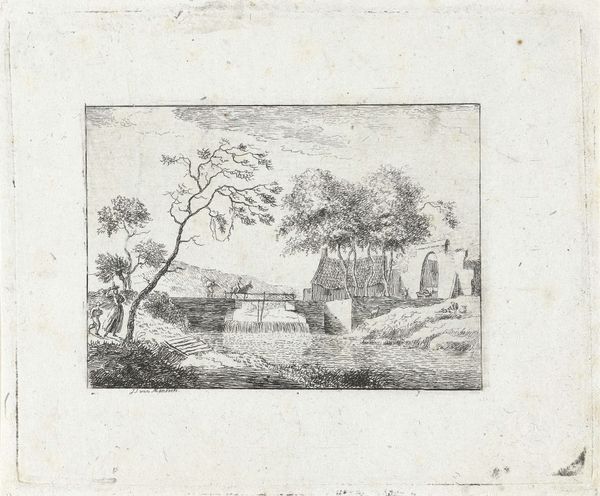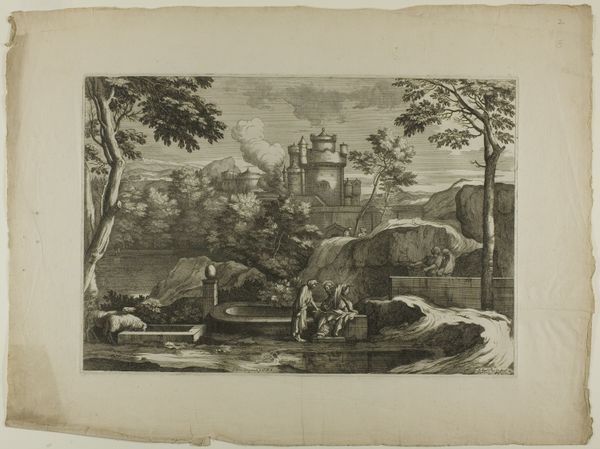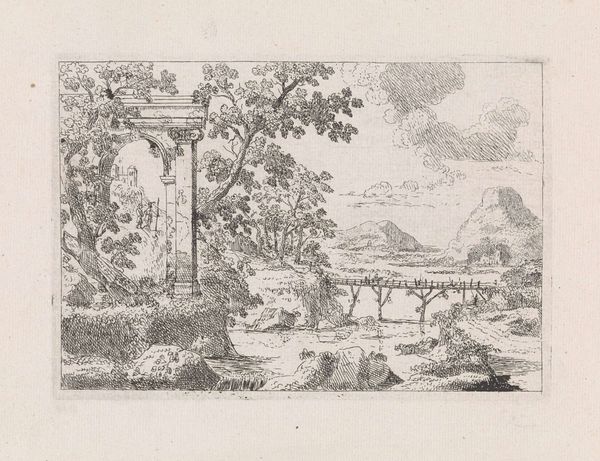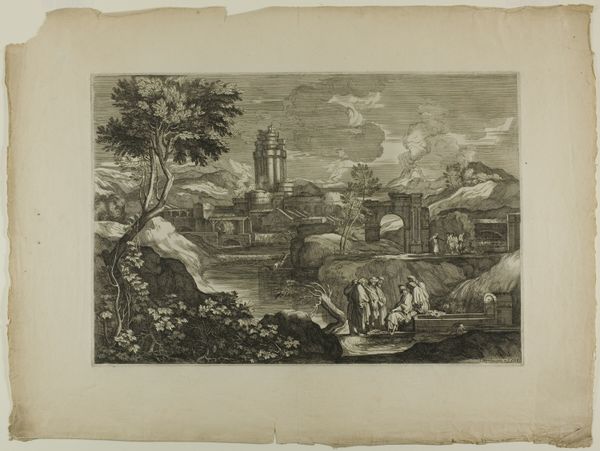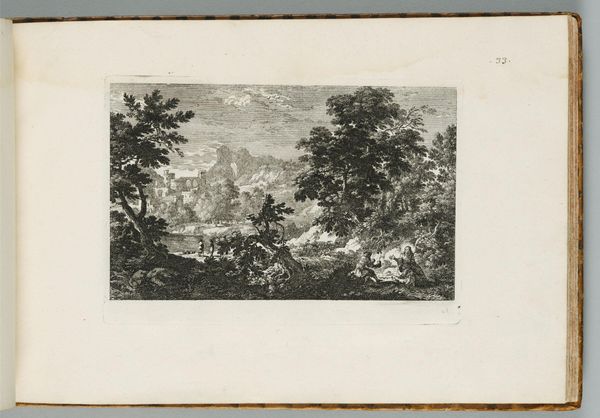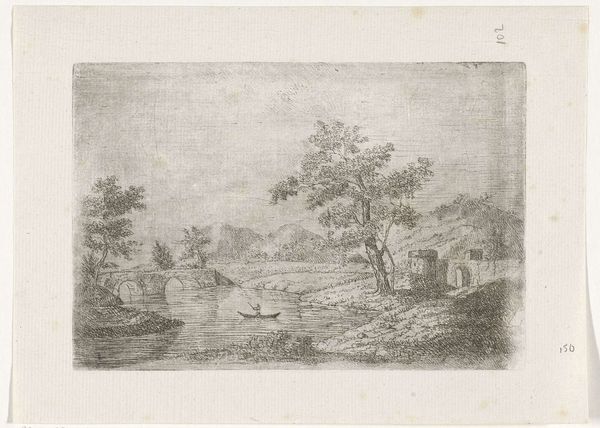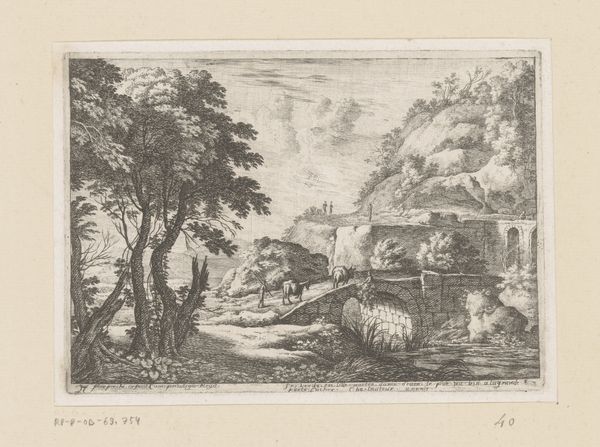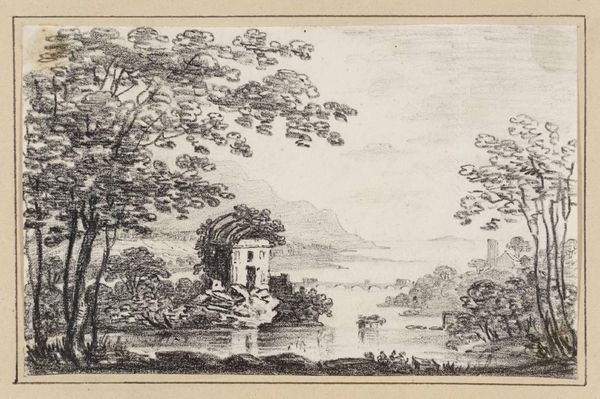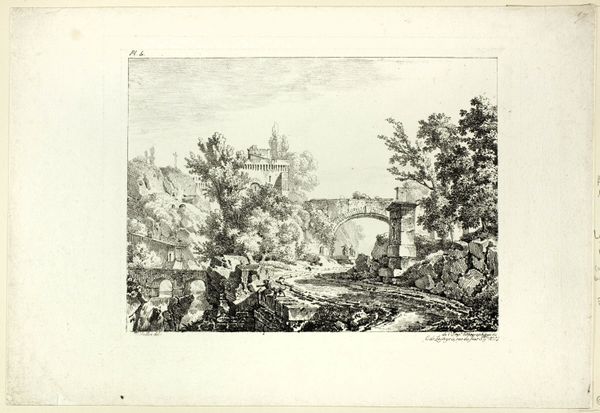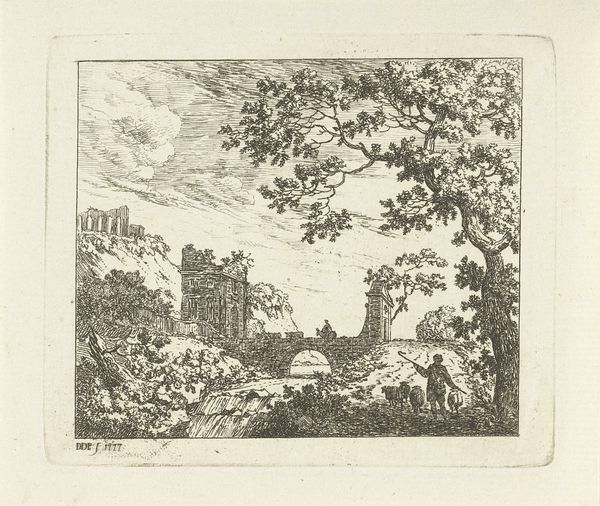
print, engraving
#
baroque
# print
#
old engraving style
#
landscape
#
perspective
#
cityscape
#
engraving
Dimensions: height 114 mm, width 154 mm
Copyright: Rijks Museum: Open Domain
Editor: Here we have Pieter Langendijk’s "River Landscape with Antique Buildings," an engraving from between 1693 and 1756. The tiny figures almost disappear into the vast landscape; I find it a bit melancholic. What do you see in this piece? Curator: It's a fascinating example of how landscape prints were used to construct and circulate ideas about power, identity and history. Consider the “antique buildings” – are these accurate depictions or imagined recreations? This idealization of the past often served to legitimize existing social hierarchies. Who gets to define "antiquity," and whose history is being told here? Editor: So, the landscape isn't just a pretty picture, but a statement about authority? Curator: Precisely! Think about the position of the viewer, subtly elevated and overlooking the scene. The ruling elite often used such depictions to project their dominance. Moreover, note the absence of, say, any references to labour beyond those figures. Whose narrative does such omission support? Editor: That makes me consider what stories are *not* being told. How would you see this piece differently from a feminist perspective? Curator: A feminist reading might highlight the under-representation of women in these historical narratives. Were women involved in shaping these landscapes and societies, or are they being written out of the story? Challenging the “universal” perspective to reveal marginalized voices can offer vital new insights. Editor: I hadn’t considered that prints like this were tools to spread ideology. Curator: Indeed! It forces us to be critical viewers, questioning whose perspectives are privileged. Editor: I will never see landscape prints the same way again. Thank you! Curator: My pleasure! The past speaks, but only if we know how to listen critically.
Comments
No comments
Be the first to comment and join the conversation on the ultimate creative platform.
